Gigabyte R281-G30 CPU Performance
As mentioned earlier in this article, we swapped sample pairs of processors from throughout the Intel Xeon Scalable range. We did not tell the company that we were doing this so they had no input on the process nor the CPUs used. At the same time, we wanted to provide a view of the different CPU levels. Intel has around 50 public domain Xeon Scalable (Skylake-SP) SKUs and the STH/ DemoEval lab has just over half of them on hand to use for testing. We did not have time to run through every set, so instead we picked a few samples to show how incrementing CPU levels impact performance.
Running through our standard test suite generated over 1000 data points for each set of CPUs. We are cherry picking a few to give some sense of CPU scaling.
Python Linux 4.4.2 Kernel Compile Benchmark
This is one of the most requested benchmarks for STH over the past few years. The task was simple, we have a standard configuration file, the Linux 4.4.2 kernel from kernel.org, and make the standard auto-generated configuration utilizing every thread in the system. We are expressing results in terms of compiles per hour to make the results easier to read.
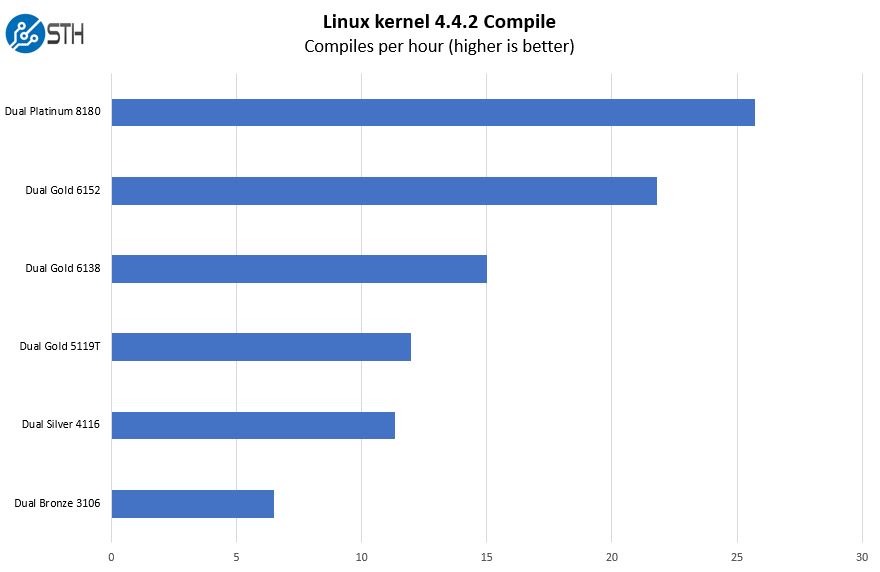
In this test, we have a fairly wide scaling range between the top and bottom configurations. If you are about CPU performance, Intel has a wide range of Intel Xeon Scalable options available for your server.
c-ray 1.1 Performance
We have been using c-ray for our performance testing for years now. It is a ray tracing benchmark that is extremely popular to show differences in processors under multi-threaded workloads. We are going to use our new Linux-Bench2 8K render to show differences.
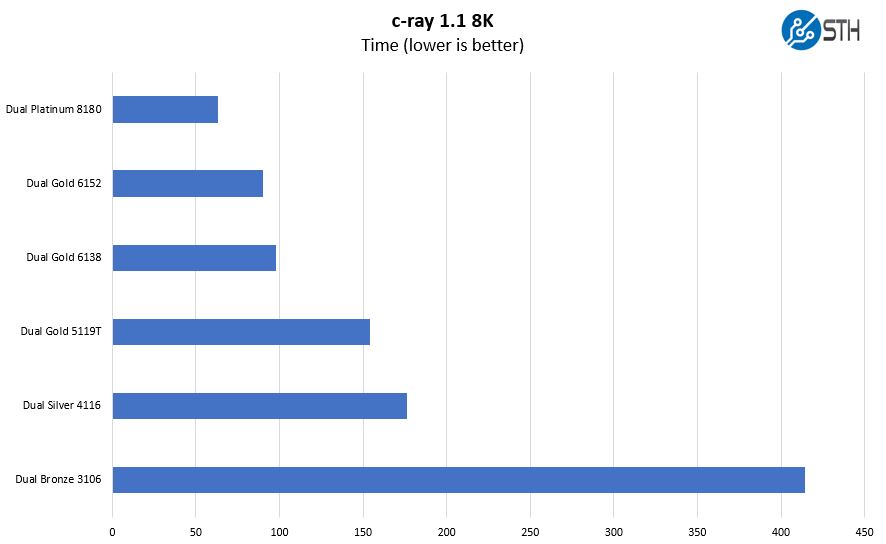
Here the difference between the lower-end Xeon Bronze configurations and the Xeon Silver 4116 is so massive that it skews the scale of our chart. We suggest that if you are buying this server, you should look at a minimum the higher-end of the Silver range, but most likely the Xeon Gold 6100 range.
7-zip Compression Performance
7-zip is a widely used compression/ decompression program that works cross-platform. We started using the program during our early days with Windows testing. It is now part of Linux-Bench.
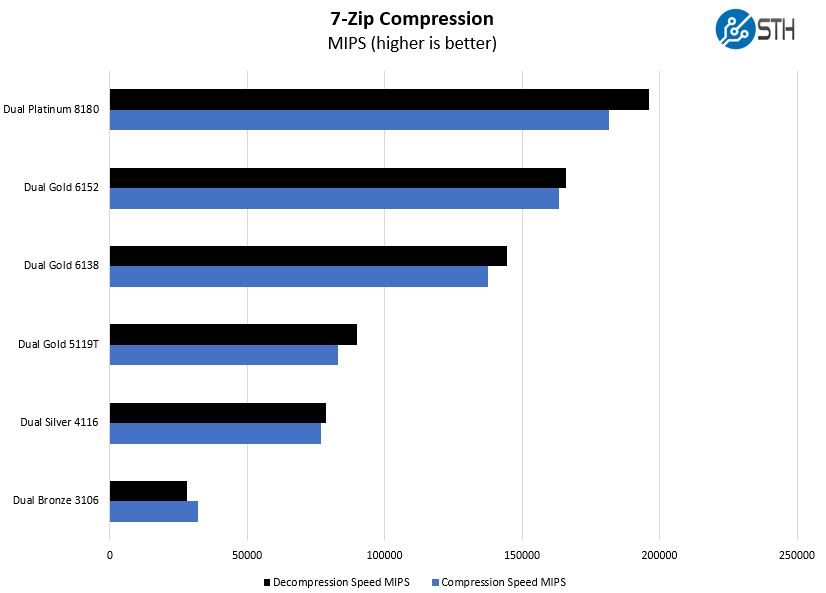
Our compression test shows a similar ranking among the CPU options. Modern servers rely on compression at a number of different workload points so this is a useful chart to gauge how the relative performance stacks up.
OpenSSL Performance
OpenSSL is widely used to secure communications between servers. This is an important protocol in many server stacks. We first look at our sign tests:
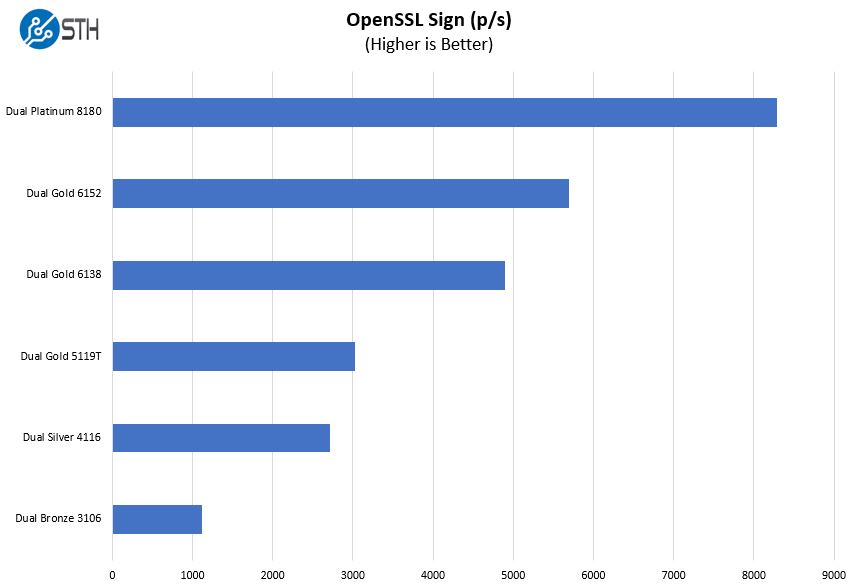
Here are the verify results:
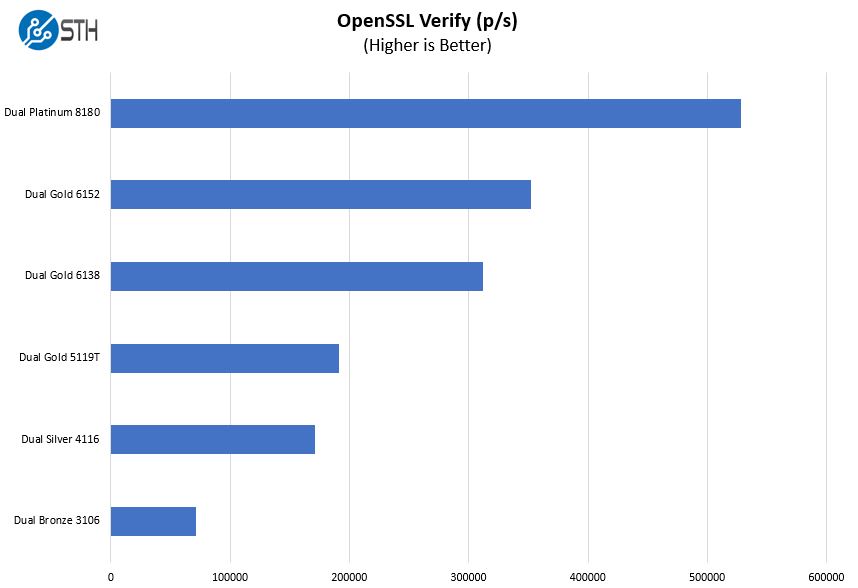
Here you can see the impact of high core counts and clock speeds. When you look at the investment in a server, CPUs are only a portion of the cost an are an opportunity to better leverage the rest of the system investment by moving up the stack.
Chess Benchmarking
Chess is an interesting use case since it has almost unlimited complexity. Over the years, we have received a number of requests to bring back chess benchmarking. We have been profiling systems and are ready to start sharing results:
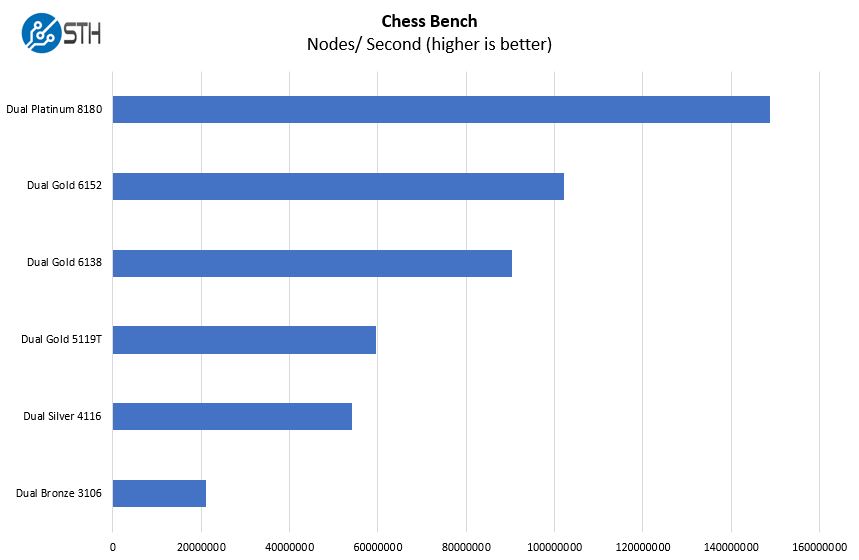
Here is a good example of where a relatively low nominal cost can yield a massive performance improvement. This is both moving from the Xeon Bronze to the Silver/ Gold 5100 lines and from the Silver/ Gold 5100 lines to the Gold 6100 series.
GROMACS STH Small AVX2/ AVX-512 Enabled
We have a small GROMACS molecule simulation we previewed in the first AMD EPYC 7601 Linux benchmarks piece. In Linux-Bench2 we are using a “small” test for single and dual socket capable machines. Our medium test is more appropriate for higher-end dual and quad socket machines. Our GROMACS test will use the AVX-512 and AVX2 extensions if available.
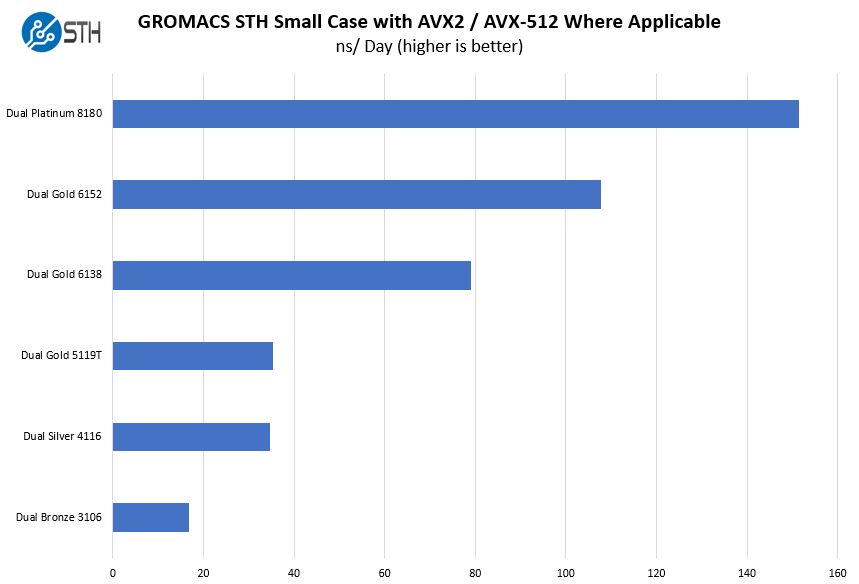
Here you can see the impact of dual port FMA AVX-512 on the Intel Xeon Scalable CPUs, specifically in the Gold 6100 and Platinum 8100 series parts. The enormous gap between the Gold 6100 series and the Gold 5100 series and below is caused by the feature’s enablement on higher-end CPUs. You can read more about that in our Intel Xeon Scalable Processor Family Microarchitecture Overview. Suffice to say there is an enormous impact with the feature in AVX-512 workloads.
Next, we are going to conclude our Gigabyte R281-G30 review with power consumption and our final words.



